In the enchanting world of trees, few captivate the imagination quite like cedar trees. With their towering heights, aromatic scents, and remarkable beauty, cedar trees have held a special place in human history and natural landscapes for centuries.
These majestic conifers belong to the genus Cedrus and are characterized by their impressive stature, durable wood, and unique features.
Let’s learn more about these amazing trees!
Scientific Classification
| Scientific Classification | |
| Kingdom | Plantae |
| Clade | Tracheophytes |
| Division | Pinophyta |
| Class | Pinopsida |
| Order | Pinales |
| Family | Pinaceae |
| Subfamily | Abietoideae |
| Genus | Cedrus |
Cedar trees
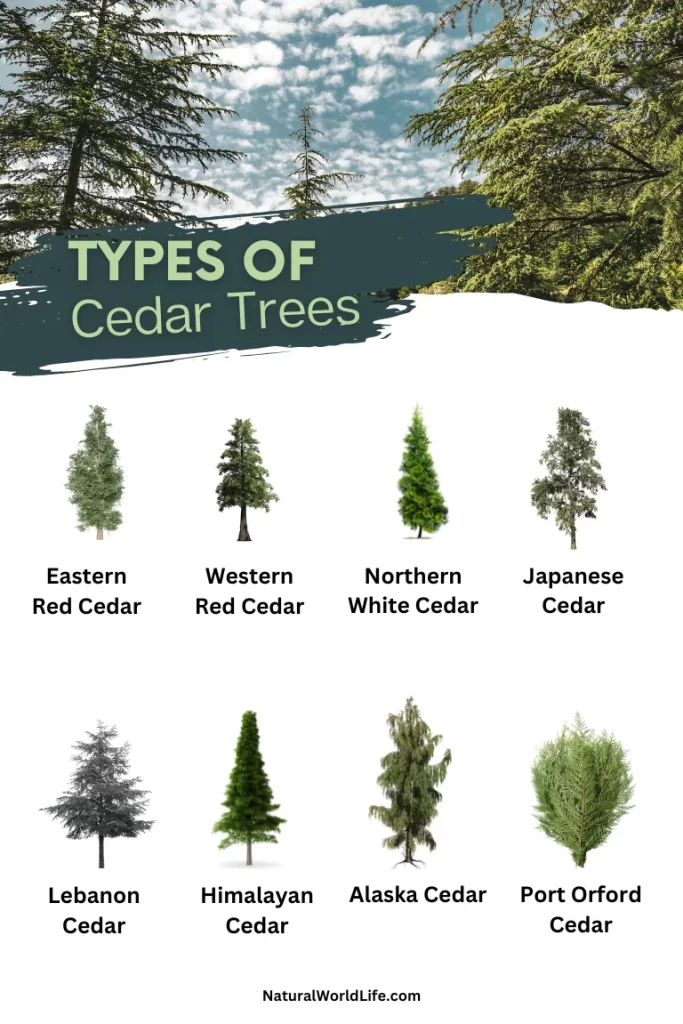
Cedar is a collective term used to refer to various species of tall, ornamental coniferous trees that belong to the family Pinaceae. These majestic trees are primarily found in the mountainous regions of the Mediterranean Basin and the Western Himalayas, where they have thrived for centuries.
Cedar trees are highly regarded for their exceptional beauty and are often used for decorative purposes in gardens and landscapes.
One of the notable features of cedar trees is their impressive height, with some species reaching towering heights of over 50 meters (164 feet). Their tall and stately stature adds grandeur and elegance to any environment. The trees typically have a conical or pyramidal shape, with branches that spread out gracefully to form a distinctive canopy.
Cedar trees are well-suited to temperate zones characterized by mild climates, where the average winter temperatures do not fall below -25 °C (-13 °F).
They have adapted to thrive in these regions, displaying a remarkable resilience to a range of environmental conditions. Their tolerance to temperature fluctuations and moderate moisture levels makes them well-suited for landscaping purposes in temperate climates.
The wood of cedar trees is highly valued for its durability, natural resistance to decay, and aromatic qualities. It is known for its distinctive reddish-brown to pinkish-brown heartwood, which is often sought after for its aesthetic appeal and resistance to rot.
Cedar wood is commonly used in construction, cabinetry, furniture making, and crafting due to its excellent workability and appealing grain patterns.
In addition to their ornamental and practical uses, cedar trees also play a significant role in the environment.
They provide important habitat for various wildlife species and contribute to the overall biodiversity of their ecosystems. Cedar forests help regulate local climates, reduce soil erosion, and improve air quality by absorbing carbon dioxide and releasing oxygen.
Throughout history, cedar trees have held cultural and symbolic significance in many societies. They have been revered for their longevity, strength, and majestic appearance. In ancient civilizations, cedar wood was considered a precious and sacred material, often used in the construction of temples, palaces, and sacred objects.
Today, cedar trees continue to enchant and inspire with their natural beauty, resilience, and the many benefits they offer. Whether admired for their towering presence in the landscape or appreciated for their versatile wood, cedars hold a special place in the hearts and minds of people around the world.
Quick information
| Cedar Type | Scientific Name | Native Region | Notable Features |
|---|---|---|---|
| Eastern Red Cedar | Juniperus virginiana | Eastern North America | Dense pyramidal shape, blueish-green foliage, small bluish berries |
| Western Red Cedar | Thuja plicata | Western North America | Narrow conical shape, scale-like foliage in shades of dark green to red/brown |
| Atlantic White Cedar | Chamaecyparis thyoides | Eastern United States | Slender columnar shape, soft feathery light green to bluish-green foliage |
| Northern White Cedar | Thuja occidentalis | North America | Narrow pyramid-like shape, dense dark green scale-like foliage |
| Japanese Cedar | Cryptomeria japonica | Japan | Upright columnar shape, bright green needle-like foliage turning bronze/reddish-brown in autumn |
| Lebanon Cedar | Cedrus libani | Eastern Mediterranean | Broad spreading canopy, dense bluish-green foliage |
| Himalayan Cedar | Cedrus deodara | Himalayan region | Conical shape when young, spreading with age, feathery bluish-green foliage |
| Alaska Cedar | Cupressus nootkatensis | Pacific Northwest, North America | Narrow pyramidal shape, aromatic bluish-green/grayish-green foliage |
| Spanish Cedar | Cedrela odorata | Tropical Americas | Straight trunk, reddish-brown to pinkish-brown heartwood, distinct aroma |
| Port Orford Cedar | Chamaecyparis lawsoniana | Pacific coast, North America | Conical shape, fragrant scale-like foliage in shades of dark green to yellowish-green |
| Incense Cedar | Calocedrus decurrens | Western North America | Narrow conical shape, aromatic bright green scale-like foliage |
Diversity of Species: 20 types of cedar trees
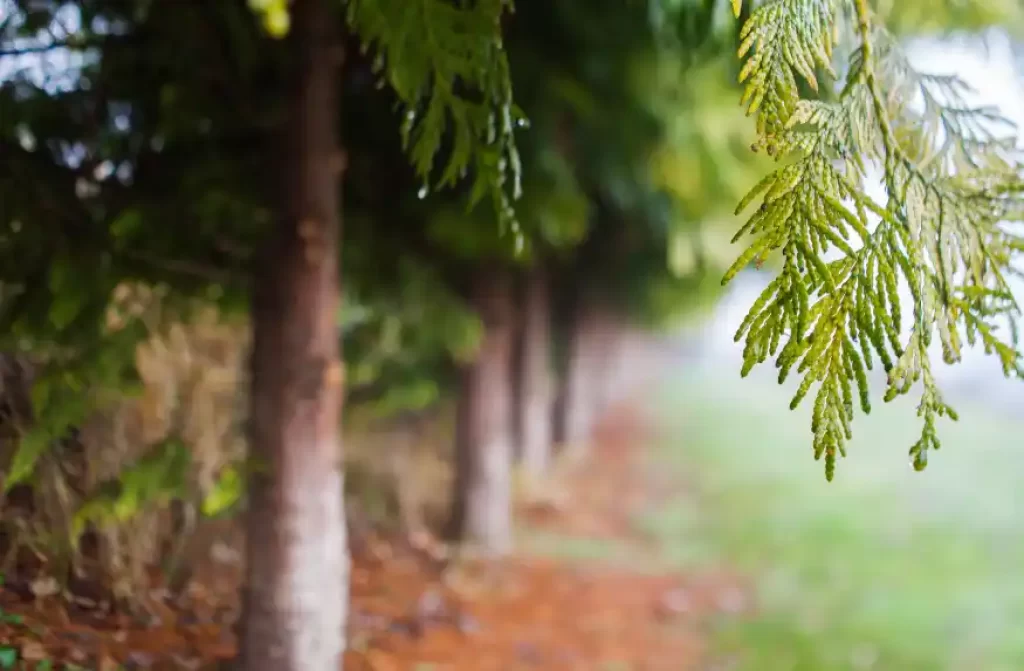
Cedar encompasses a variety of tree species, including:
Eastern Red Cedar (Juniperus virginiana)
The Eastern Red Cedar is a small to medium-sized evergreen tree that is native to eastern North America. It is known for its dense and pyramidal shape, making it an attractive addition to landscapes.
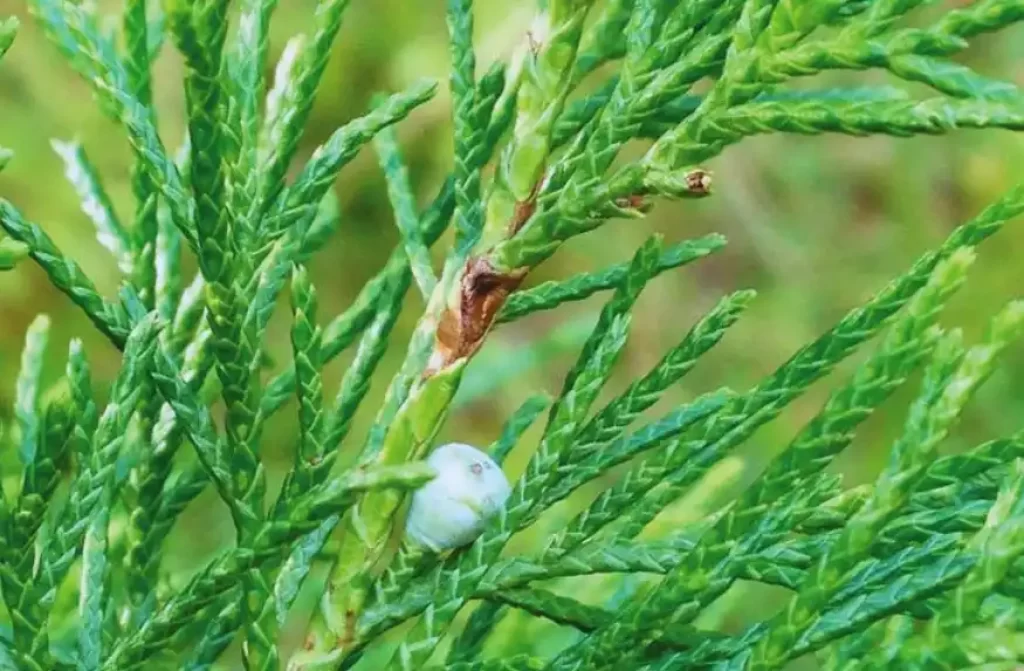
The tree features blueish-green foliage that retains its color throughout the year, providing a vibrant appearance even in winter. It produces small, bluish berries that are a food source for birds and other wildlife.
The Eastern Red Cedar is highly adaptable and can thrive in various soil types and environmental conditions.
Western Red Cedar (Thuja plicata)
The Western Red Cedar is a majestic evergreen conifer found in the western parts of North America, from Alaska to California.
It is known for its impressive size and longevity, often reaching heights of up to 200 feet (60 meters) and living for several centuries.
The tree has a narrow, conical shape that tapers towards the top. Its scale-like foliage ranges in color from dark green to vibrant shades of red and brown, creating a visually striking appearance.
Western Red Cedar is valued for its aromatic wood, which is resistant to decay and used for various purposes, including construction, outdoor furniture, and decorative items.
Atlantic White Cedar (Chamaecyparis thyoides)
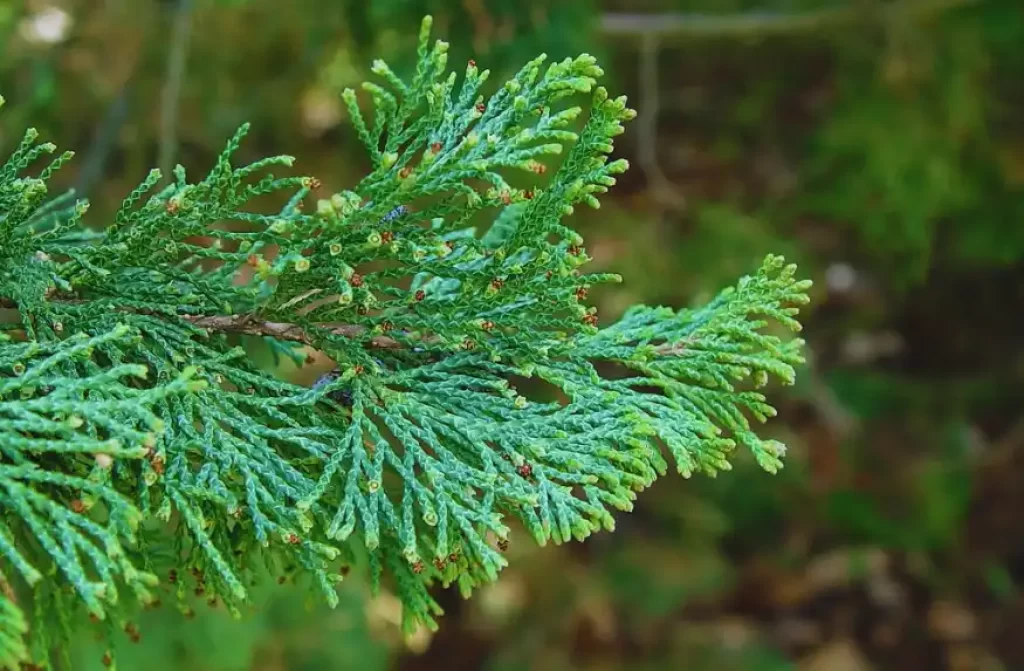
The Atlantic White Cedar is a medium-sized evergreen tree native to the eastern United States, particularly the coastal regions. It has a slender and columnar shape, making it an excellent choice for narrow spaces and screening purposes.
The tree showcases soft and feathery foliage that appears light green to bluish-green, providing an elegant and delicate look. Atlantic White Cedar is well-suited to wet and swampy environments, as it has a high tolerance for waterlogged soils.
It is valued for its fine-grained and highly decay-resistant wood, used in the construction of outdoor structures, such as fences, decking, and shingles.
Northern White Cedar (Thuja occidentalis)
The Northern White Cedar, also known as Eastern Arborvitae, is a small to medium-sized coniferous tree native to North America.
It has a narrow and pyramid-like shape, with branches extending horizontally from the trunk. The tree exhibits dense and scale-like foliage that is dark green in color, providing a dense and lush appearance.
Northern White Cedar is commonly used for hedges, windbreaks, and privacy screens due to its dense growth and ability to withstand pruning. It is also valued for its fragrant wood, which is lightweight, easy to work with, and resistant to decay.
Japanese Cedar (Cryptomeria japonica)
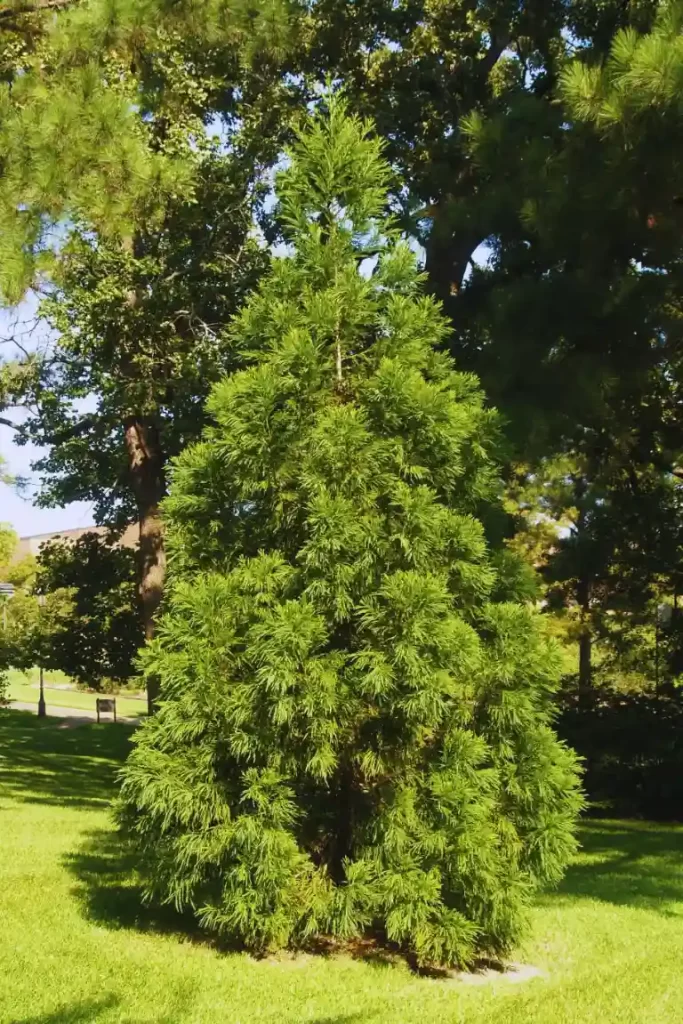
The Japanese Cedar is a tall evergreen tree that is native to Japan. It has an upright and columnar shape, making it a popular choice for vertical accents in gardens and landscapes.
The tree features soft and needle-like foliage that emerges bright green in spring, creating a fresh and vibrant look.
As the seasons change, the foliage of Japanese Cedar turns bronze or reddish-brown, adding warmth and visual interest to the landscape. Japanese Cedar is valued for its ornamental appeal and is often used in parks, temples, and residential gardens for its aesthetic qualities.
Lebanon Cedar (Cedrus libani)
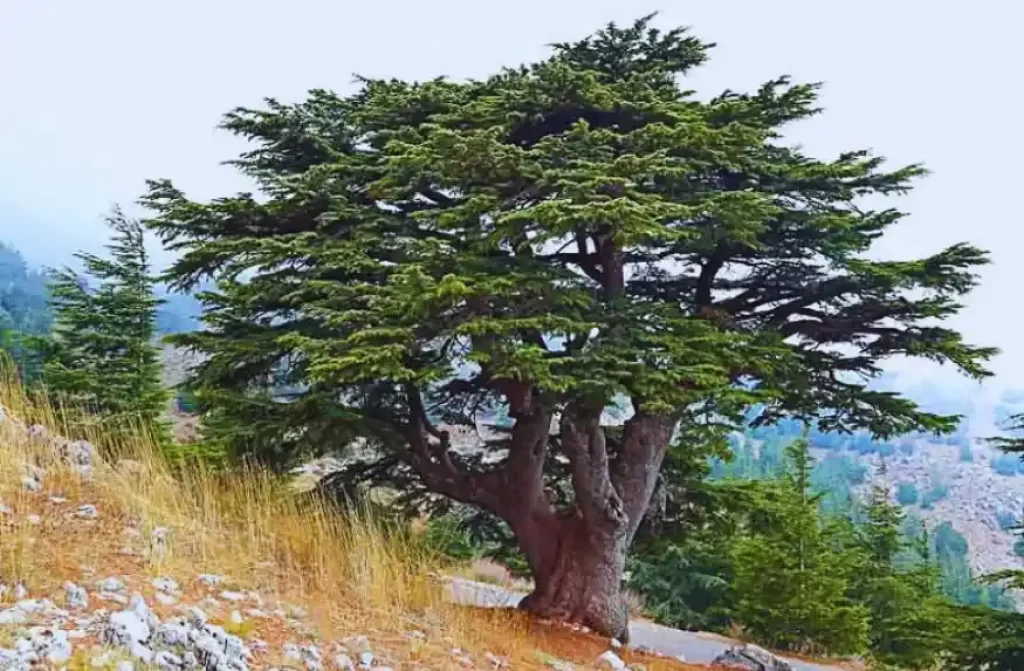
The Lebanon Cedar is a large evergreen tree that is native to the mountains of the Eastern Mediterranean region. It is known for its majestic appearance, with a broad and spreading canopy supported by horizontal branches.
The tree exhibits dense and bluish-green foliage, creating a striking contrast against its rugged, grayish-brown bark.
The Lebanon Cedar has a rich history and cultural significance, being mentioned in ancient texts and revered for its timber, which is highly prized for its durability and aromatic scent. It is a symbol of strength and resilience in the region.
Himalayan Cedar (Cedrus deodara)
The Himalayan Cedar is a majestic evergreen tree native to the Himalayan region, including parts of India, Nepal, and Pakistan.
When young, it has a conical shape that later becomes more spreading with age. The tree features feathery and bluish-green foliage, adding elegance to its overall appearance.
Himalayan Cedar is highly valued for its ornamental qualities and is often planted in parks, gardens, and arboretums. Its timber is also prized for its durability and resistance to decay, making it a sought-after material for construction and woodworking.
Alaska Cedar (Cupressus nootkatensis)
The Alaska Cedar, also known as Nootka Cypress, is a tall evergreen tree native to the Pacific Northwest of North America. It has a narrow and pyramidal shape, making it an excellent choice for vertical accents in landscapes.
The tree’s foliage is characterized by its bluish-green or grayish-green color, lending a cool and serene ambiance to its surroundings.
Alaska Cedar is valued for its aromatic wood, which is often used in the construction of outdoor structures, such as fences, decking, and siding. It is also a favored tree for reforestation efforts in the region.
Spanish Cedar (Cedrela odorata)
Despite its name, Spanish Cedar is not a true cedar but a tropical hardwood tree native to the Americas. It is renowned for its straight trunk and beautiful reddish-brown to pinkish-brown heartwood, which often features a pleasant fragrance.
Spanish Cedar is highly valued for its timber, which is lightweight, durable, and resistant to rot, making it ideal for various applications. It is commonly used in the crafting of furniture, cabinets, veneers, musical instruments, and cigar boxes. Additionally, the tree’s essential oils are known for their insect-repellent properties.
Port Orford Cedar (Chamaecyparis lawsoniana)
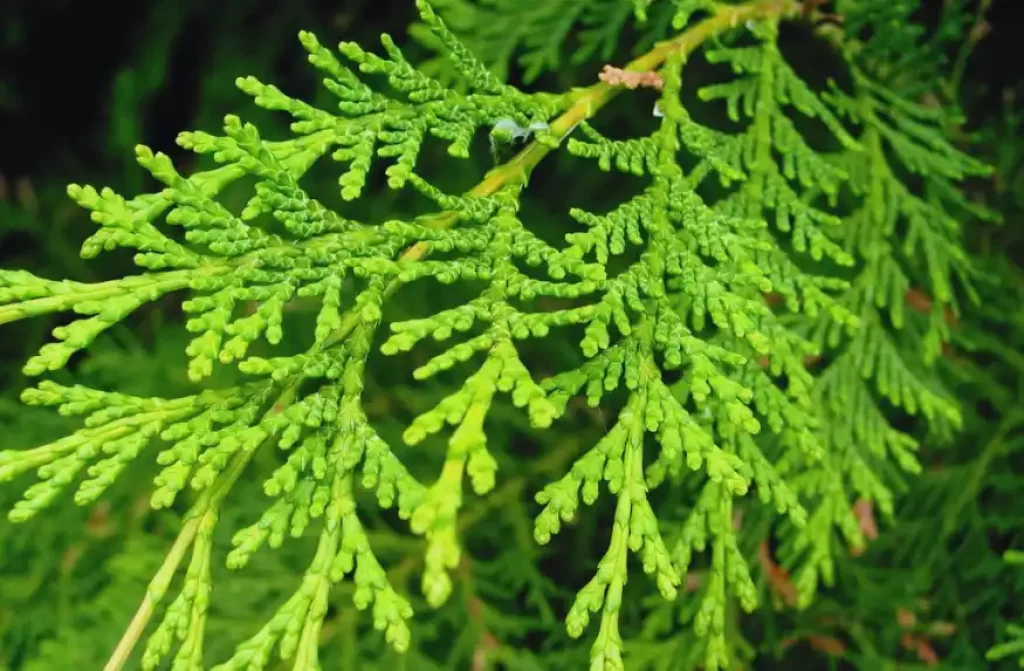
The Port Orford Cedar is a medium-sized evergreen tree found along the Pacific coast of North America, primarily in Oregon and California. It has a conical shape and exhibits fragrant, scale-like foliage that ranges in color from dark green to yellowish-green.
The tree’s wood is highly valued for its straight grain and resistance to decay, making it a popular choice for construction, boat building, and other outdoor applications. Port Orford Cedar is also appreciated for its ornamental value, adding beauty and fragrance to landscapes and gardens.
Incense Cedar (Calocedrus decurrens)
The Incense Cedar is a tall evergreen tree native to western North America, particularly the Sierra Nevada and Cascade mountain ranges. It has a narrow and conical shape, creating a stately presence in the landscape.
The tree’s scale-like foliage is bright green in color, providing a fresh and vibrant appearance. As its name suggests, the Incense Cedar emits a pleasant fragrance, especially when its bark is disturbed or crushed.
This aromatic quality has made it a popular choice for use in incense, potpourri, and essential oils. Additionally, the tree’s wood is utilized for various applications, including outdoor furniture, paneling, and shingles.
Deodar Cedar (Cedrus deodara)
The Deodar Cedar is a large evergreen tree native to the western Himalayas, including regions of India, Pakistan, and Afghanistan. It is known for its majestic and pyramidal shape, with branches that gracefully droop downwards.
The tree’s needle-like foliage ranges in color from bluish-green to silver-gray, adding to its overall elegance. Deodar Cedar is highly valued for its ornamental appeal and is often planted in parks, gardens, and large estates.
Its timber is also prized for its durability and resistance to rot, making it a favored choice for construction, flooring, and furniture-making.
California Incense Cedar (Calocedrus decurrens)
The California Incense Cedar is a medium-sized evergreen tree that is native to the western United States, particularly California and Oregon. It has a distinctive conical shape, with branches that sweep upward and elegant, drooping tips.
The tree is adorned with aromatic, scale-like foliage that is deep green in color, providing a refreshing fragrance when touched or crushed. California Incense Cedar is highly valued for its wood, which is lightweight, durable, and resistant to decay.
It is often used in the crafting of outdoor furniture, decking, and siding, as well as for the production of pencils and aromatic products.
Southern White Cedar (Chamaecyparis thyoides)
The Southern White Cedar, also known as Atlantic White Cedar, is a small to medium-sized evergreen tree found in the southeastern United States, primarily in wetland areas. It has a narrow and columnar shape, adding a vertical element to landscapes.
The tree’s soft and scale-like foliage appears bluish-green, creating a delicate and soothing appearance.
Southern White Cedar is valued for its adaptability to moist soils and its ability to withstand occasional flooding. It is often planted for erosion control, as windbreaks, and for its ornamental beauty in gardens and parks.
Mexican White Cedar (Cupressus lusitanica)
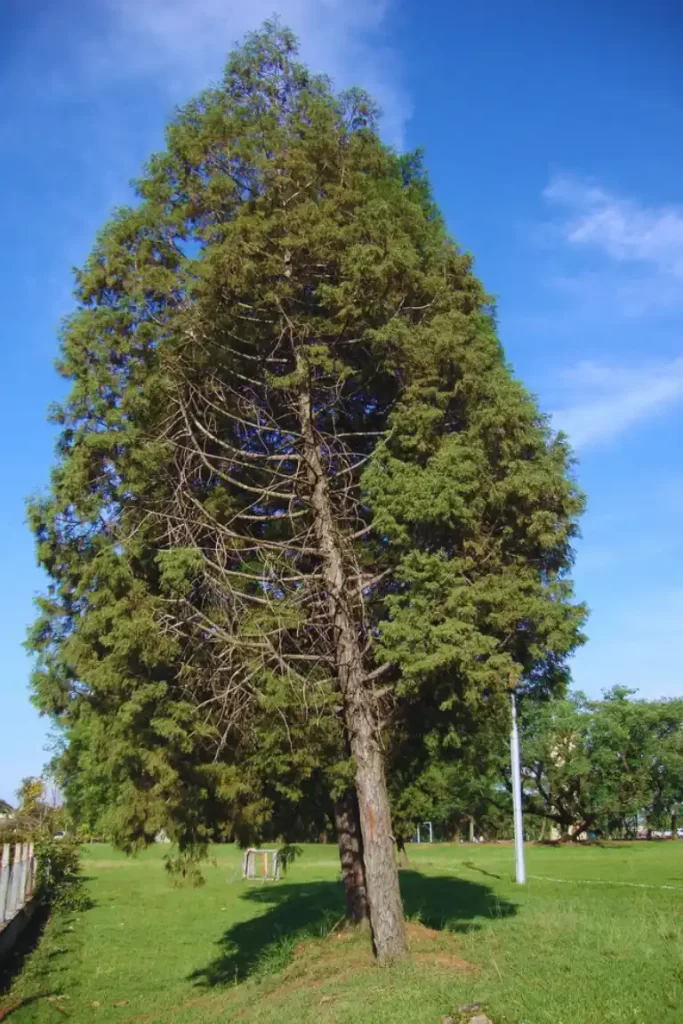
The Mexican White Cedar, also called Mexican Cypress, is a medium-sized evergreen tree native to Mexico and Central America. It has a conical shape, with branches that spread outwards to form a dense crown.
The tree displays dense and dark green foliage, providing a rich and lush appearance. Mexican White Cedar is appreciated for its ornamental value and is often planted in parks, gardens, and along streets for its aesthetic appeal.
Its timber is also utilized for various purposes, including construction, furniture-making, and as a source of essential oils.
Cyprus Cedar (Cedrus brevifolia)
The Cyprus Cedar, also known as Cyprian Cedar or Cyprus Island Cedar, is a small evergreen tree native to the island of Cyprus.
It has a compact and spreading shape, with branches that radiate outwards, creating a dense and rounded canopy. The tree’s short and bluish-green needles form dense tufts, adding texture and interest to its appearance.
The Cyprus Cedar is highly valued for its historical and cultural significance. It has been celebrated in mythology, literature, and art, and its wood has been used for centuries in construction, furniture-making, and shipbuilding.
Himalayan White Cedar (Cedrus deodara)
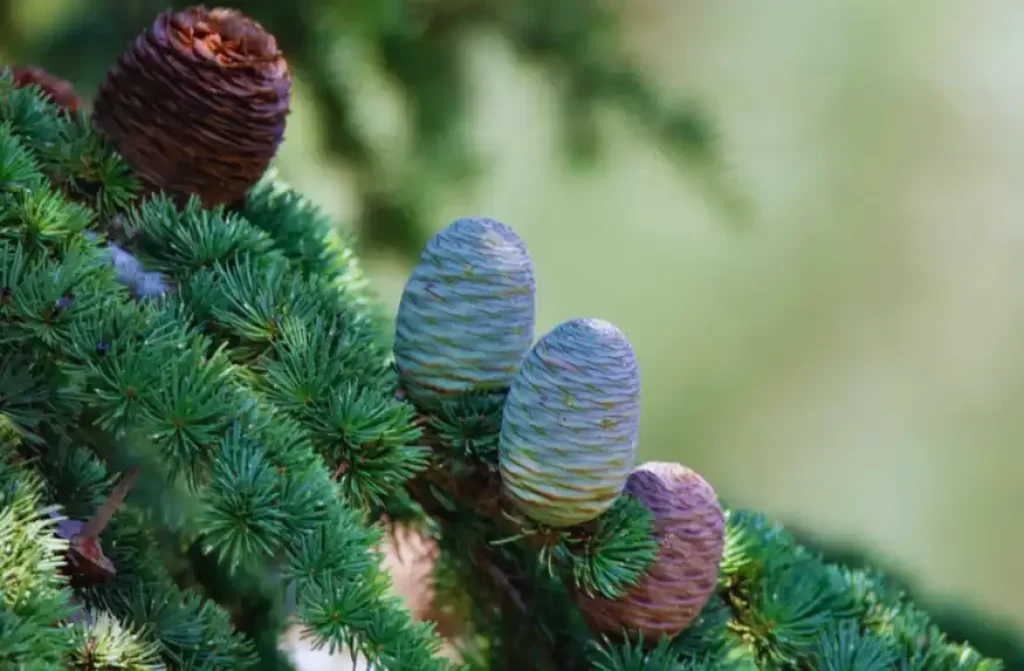
The Himalayan White Cedar, also known as Deodar Cedar, is a majestic evergreen tree native to the western Himalayas, including regions of India, Pakistan, and Afghanistan. It is characterized by its large size and pyramidal shape, with branches that sweep downwards in a graceful manner.
The tree’s needle-like foliage is bluish-green and appears silvery when viewed from a distance, creating a stunning visual impact.
Himalayan White Cedar is highly valued for its ornamental qualities and is often planted in parks, estates, and large gardens. Its timber is also prized for its durability, making it a favored choice for construction, furniture-making, and decorative woodworking.
Texas Red Cedar (Juniperus ashei)
The Texas Red Cedar, also known as Ashe Juniper, is a small to medium-sized evergreen tree native to central Texas in the United States. It has a rounded crown and a distinctive appearance with scale-like foliage that ranges in color from grayish-green to bluish-green.
The tree is well adapted to the arid and rocky landscapes of Texas and is often found in limestone areas. Texas Red Cedar is highly valued for its wood, which is durable and decay-resistant, making it suitable for various outdoor applications, including fence posts, furniture, and crafts. It also provides important habitat and food sources for wildlife, particularly birds and mammals.
Sierra White Cedar (Libocedrus decurrens)
The Sierra White Cedar is a tall evergreen tree that can be found in the Sierra Nevada mountains of California and Oregon.
It has a narrow and conical shape, adding vertical interest to the landscape. The tree’s scale-like foliage is dark green or bluish-green, creating a beautiful contrast against the backdrop of the mountainous terrain. Sierra White Cedar is known for its adaptability to different soil types and its tolerance to cold temperatures.
It is often used in reforestation efforts and for erosion control in mountainous regions. The wood of Sierra White Cedar is prized for its durability and is utilized in construction, cabinetry, and crafting.
Atlas Cedar (Cedrus atlantica)
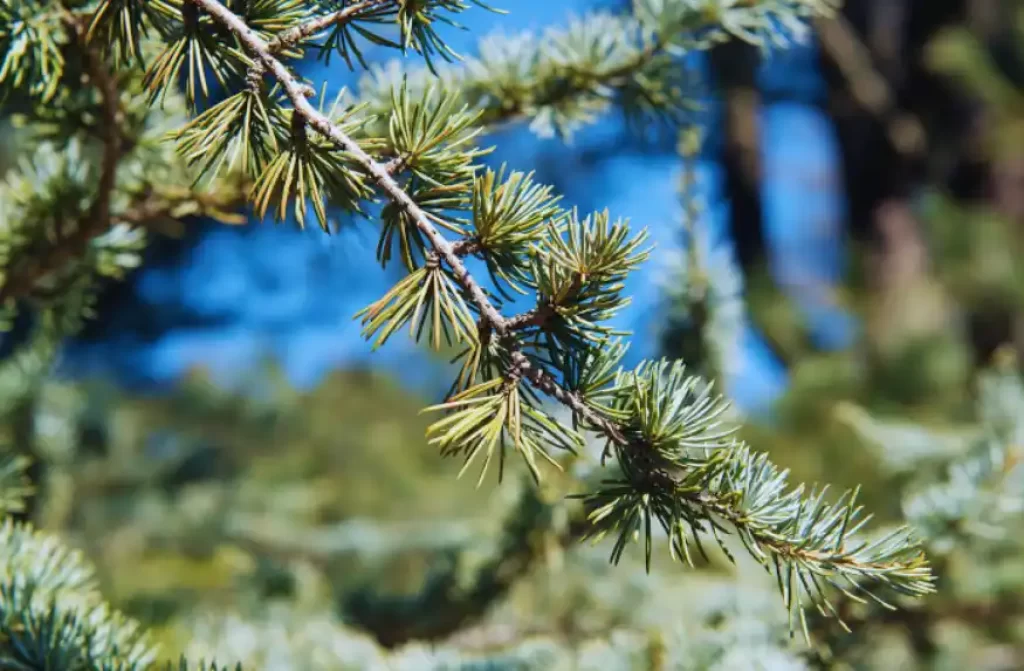
The Atlas Cedar is a large evergreen tree native to the Atlas Mountains of Morocco and Algeria in North Africa. It is an impressive tree with a broad and pyramidal shape that tapers to a point at the top.
The tree’s dense foliage consists of needle-like leaves that range in color from blue-green to silver-blue, providing a striking visual display.
Atlas Cedar is valued for its ornamental beauty and is often planted in parks, estates, and large gardens as a specimen tree. The wood of Atlas Cedar is highly durable and resistant to decay, making it suitable for outdoor applications such as decking, siding, and furniture.
It is also used in the production of essential oils, which have a distinct aroma and are utilized in perfumes and aromatherapy.
Each of these cedar tree species contributes to the biodiversity of their respective regions and provides various ecological and economic benefits. From their unique shapes and foliage colors to their valuable wood properties, cedar trees have captivated people for centuries and continue to be cherished for their beauty and utility.







